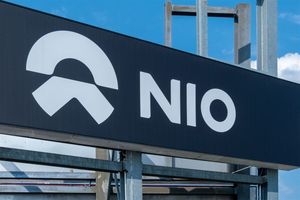Since the moment DeFi was born, we have been discussing decentralization and security, and the hopeful phrase written by Satoshi Nakamoto, which embodies the spirit of blockchain, has gradually become a reality with the steady growth of DeFi. But ultimately, the core of DeFi has always been about generating profits, and making the majority of liquidity profitable. This is the most important practical problem that DeFi currently faces.
After DeFi Summer, users are no longer going crazy for altcoins that promise exceptionally high returns. Real DeFi projects need to have massive liquidity and offer substantial and stable income to achieve that. It's more like traditional finance investment, where top projects can give you over 20% annual return on billions of dollars. That's the kind of profit model that DeFi is known for and that people accept.
But in today's environment where large projects are constantly collapsing and liquidity is further drying up, without the existence of aggregators, many small projects would hardly have a chance to survive, let alone provide significant returns. The market also seems to have not given these projects much opportunity for a recovery. In such a situation, DeFi is now deeply trapped in a financial predicament.
As a decentralized or even a blockchain business card, there is no doubt about the importance of DeFi. Naturally, there are countless projects making improvements and fixes. This article will change perspectives, using the decentralized perpetual contract platform L7 DEX to extend from established projects to new ones. Let's see how these up-and-coming derivatives handle the problem and solve the DeFi liquidity crisis in their own way.

Starting from the root, optimizing liquidity.
There are many reasons for DeFi liquidity drying up. From an external perspective, in the past two years, the yields of traditional financial assets such as US bonds and stocks have been continuously rising, surpassing a 5% yield curve at one point, which led to more assets being shifted back to the real world for profit. From an internal perspective, the shrinking returns of DeFi itself cannot be underestimated. According to DeFi Llama data, DeFi yields have dropped to a record low of 2%, even lower than bank deposit interest rates. For most participants, this is almost unprofitable. Therefore, users naturally become unwilling to take on more risks while only getting lower returns compared to traditional financial investments.
The key to solving this problem lies in restoring user confidence, boosting their enthusiasm for participation, and providing them with more viable and reliable profit models. To achieve this, L7 DEX has adopted a three-step strategy: using NFTs and an efficient economic system to ensure a continuous source of liquidity, creating deeper liquidity pools; continuously innovating mechanisms to ensure stable growth in platform and user profits; expanding the platform by utilizing liquidity and IEO to promote revenue streams diversification.
NFT+economic system, providing a continuous flow of liquidity
DeFi liquidity relies on participants providing and collaborating together. In order to encourage global participation, L7 DEX does not adopt the traditional community management and organizational structure used by traditional DeFi projects. Instead, it takes a more creative approach that aligns with the current Web3 user habits: combining NFTs with an efficient economic system.
In the early stages of the project, L7 DEX uses NFTs as pass cards and staking vouchers. Users who hold NFTs automatically become part of the early community. These NFTs are also key elements for earning early rewards. After staking the NFTs, users can earn profits. Due to the deep integration with the economic model, users staking NFTs will also receive LSD platform tokens based on time weighting and NFT attributes. This is a core way to acquire L7 DEX platform tokens in the early stages.
Combined with an effective community referral mechanism, this system with goals, revenue generation, and community engagement has brought a significant amount of liquidity to L7 DEX and has become an important support for its development.
Technological Innovation, Stable Profits
'Making money' cannot be separated from technological breakthroughs and product innovation, especially for a decentralized derivatives platform. As L7 DEX develops its community, it also focuses on technological refinement, innovatively adopting low slippage, high aggregation, and a more stable PvP AMM mechanism as key elements for perpetual contracts. This successfully avoids and solves the current problems in the perpetual contract DEX market, such as difficulty in placing orders, shallow depth, poor stability, and inconvenient operation.
The established community will become the first users for contract products. It can not only solve the problem of a lack of early users faced by most new projects but also provide a better testing environment for the product. It will also bring a considerable amount of transaction fee revenue at the initial stage of product launch, ensuring that the three parallel product lines can provide a more stable source of income for the platform and users. At the same time, innovative products will attract more users to join the community, forming a new development trajectory.

Aggregating Assets, Empowering Web3
Most DeFi projects' platform tokens are used almost exclusively for governance and lack functional and effective applications. In L7 DEX, this phenomenon will be changed through liquidity + IEO, making LSD a truly application-oriented and valuable aggregated asset, thereby solving the current problem of DeFi assets lacking effective value support.
In the mid-term development of the platform, users have earned a considerable amount of LSD through NFT staking and liquidity staking. At this point, various methods such as project buybacks, staking governance, and the consumption of the economic model itself have effectively achieved the deflation of LSD. However, this does not solve the problem of the continuous increase in LSD circulation, nor can it further impart LSD more practical value.
To solve these problems, L7 DEX first focuses on liquidity and collaborates with existing high-quality Web3 projects on the market to establish Farm mining pools. This deepens cooperation and provides users with more profitable opportunities. To participate in these projects, users need to use LSD as the core asset and add it to the liquidity pool. The collaborating projects themselves also need to pay or stake more LSD to gain further expansion opportunities. This combination not only greatly improves the circulation efficiency and utilization of LSD but also naturally achieves effective deflation of LSD in various practical applications.
One of the ways to truly tokenize LSD and maximize its circulation is through IEO (Initial Exchange Offering), by investing in and incubating a large number of high-quality Web3 projects. This helps maximize the circulation of LSD, through continuous investment and efficient turnover, making LSD a platform asset like ETH and BNB. This approach aims to maximize consensus and liquidity, and also solves the problem of users not being able to earn high returns through DeFi.
Waiting for a bull market is not the only solution.
From an external perspective, various narratives emerge and various hot topics come and go, seemingly indicating that apart from waiting for a bull market, there is no other way to addres the ailment of DeFi. However, through a simple understanding of L7 DEX, we can still break through one by one in terms of user, product, scalability, and yield combination through continuous innovation of various derivatives, turning this DeFi defense battle from passive to active.The core meaning of DeFi's existence is to generate revenue for users, especially the majority of users. Under this goal, projects that are no longer detached from users and no longer idle will build a true Web3. More projects like L7 DEX will make the hope implied in "The Times 03/Jan/2009 Chancellor on brink of second bailout for banks" no longer distant but an achievable future.
Media Contact
Company Name: L7 Labs
Contact Person: Lucas
Email: Send Email
Country: United Arab Emirates
Website: www.l7dex.finance





